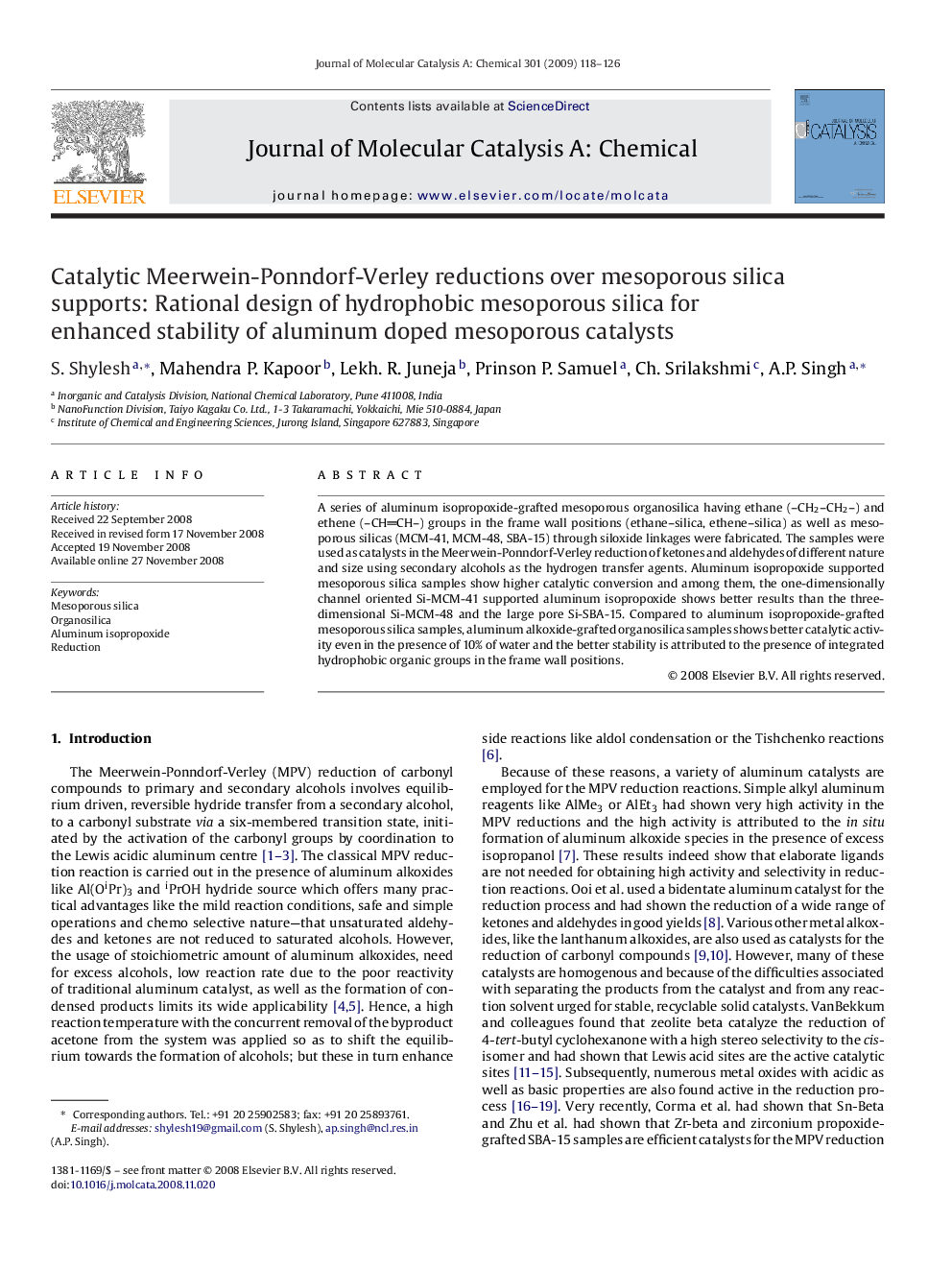| Article ID | Journal | Published Year | Pages | File Type |
|---|---|---|---|---|
| 67257 | Journal of Molecular Catalysis A: Chemical | 2009 | 9 Pages |
A series of aluminum isopropoxide-grafted mesoporous organosilica having ethane (–CH2–CH2–) and ethene (–CHCH–) groups in the frame wall positions (ethane–silica, ethene–silica) as well as mesoporous silicas (MCM-41, MCM-48, SBA-15) through siloxide linkages were fabricated. The samples were used as catalysts in the Meerwein-Ponndorf-Verley reduction of ketones and aldehydes of different nature and size using secondary alcohols as the hydrogen transfer agents. Aluminum isopropoxide supported mesoporous silica samples show higher catalytic conversion and among them, the one-dimensionally channel oriented Si-MCM-41 supported aluminum isopropoxide shows better results than the three-dimensional Si-MCM-48 and the large pore Si-SBA-15. Compared to aluminum isopropoxide-grafted mesoporous silica samples, aluminum alkoxide-grafted organosilica samples shows better catalytic activity even in the presence of 10% of water and the better stability is attributed to the presence of integrated hydrophobic organic groups in the frame wall positions.
Graphical abstractAluminium isopropoxide-grafted mesoporous silicas (MCM-41, MCM-48, SBA-15), silylated mesoporous silicas and organosilicas (having ethane (–CH2–CH2–) and ethene (–CHCH–) groups in the frame wall positions) were synthesized (see picture) and were applied as catalysts in the MPV reduction reaction of ketones and aldehydes of different nature and size using secondary alcohols as the hydrogen transfer agents.Figure optionsDownload full-size imageDownload as PowerPoint slide
